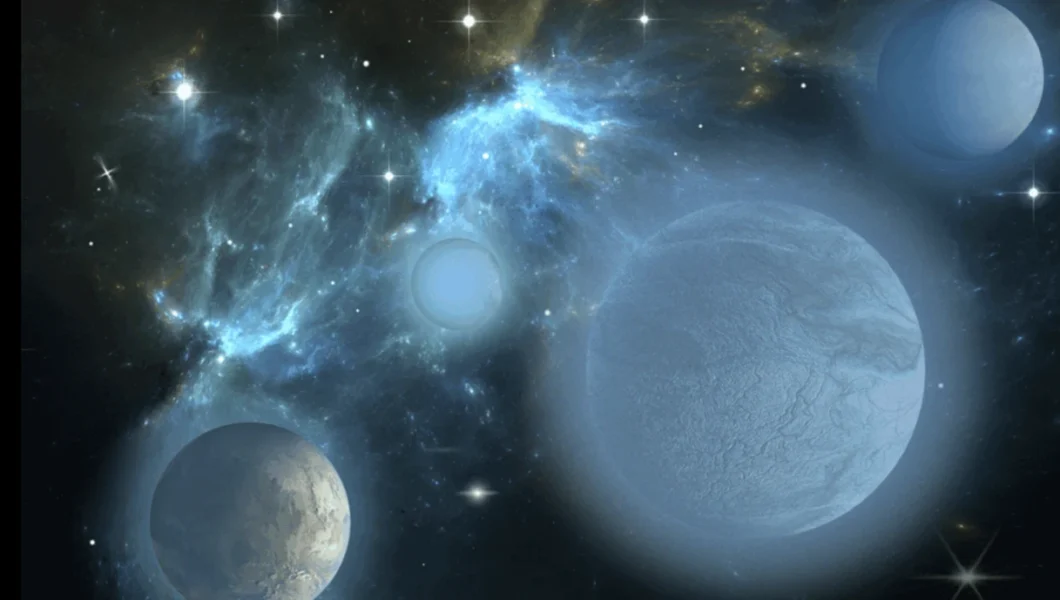The Search for ‘Carbon-Lite’ Exoplanet Atmospheres with the James Webb Space Telescope
When it comes to detecting the presence of liquid water on planets outside the solar system, and thus the conditions needed for life, the James Webb Space Telescope (JWST) might want to look for what is missing rather than what is there. Here’s what that means.
A team of researchers, including scientists from the Massachusetts Institute of Technology (MIT) and the University of Birmingham, suggest that if rocky worlds like earth outside the solar system have a lower quantity of carbon dioxide in their atmospheres than other planets in the same system, this could be a sign they harbor liquid water.
And as we know from the formation of life on our own planet, and the conditions needed to support life here, the presence of liquid water is a key indicator of potential habitability.
New Discoveries in Exoplanet Science
Looking for key chemical components that indicate habitability on extra-solar planets, or exoplanets, is only just within reach of current technologies. Depleted carbon dioxide is a signature the JWST is now ready to spot. “The Holy Grail in exoplanet science is to look for habitable worlds and the presence of life, but all the Features that have been talked about so far have been beyond the reach of the newest observatories,” Julien de Wit, a discovery team member and an assistant professor of planetary sciences at MIT, said in a statement.
Spotting Potential Habitability
Currently, scientists are very good at using instruments to determine how far a planet is from its host star and thus whether it is in that star’s “habitable zone” — defined as the region that’s neither too hot nor too cold to allow for the existence of liquid water.
In our own solar system, however, earth, Mars, and even Venus are all in the habitable zone around the sun. Yet, only one of those planets currently has the capability to support life as we know it. That means habitability and preserving liquid water for exoplanets isn’t all location, location, location.
The Role of Carbon Dioxide in Habitability
Thinking about earth, Mars, and Venus as well as the differences between the trio, the team realized that the only one with habitability, earth, also has an atmosphere depleted of carbon dioxide in comparison to its habitable zone neighbors.
“We assume that these planets were created in a similar fashion, and if we see one planet with much less carbon now, it must have gone somewhere,” Triaud pointed out. “The only process that could remove that much carbon from an atmosphere is a strong water cycle involving oceans of liquid water.”
Implications for Exoplanet Exploration
Over the course of billions of years, our planet’s oceans have been responsible for depleting huge amounts of carbon dioxide from the atmosphere, meaning it has less now than Venus or Mars.
“On earth, much of the atmospheric carbon dioxide has been sequestered in seawater and solid rock over geological timescales, which has helped to regulate climate and habitability for billions of years,” Frieder Klein, research co-author and a scientist at the Woods Hole Oceanographic Institution (WHOI), said in the statement. That led the team to think that a similar depletion of carbon dioxide in an exoplanet’s atmosphere could also indicate the presence of a liquid ocean.
Conducting a Targeted Search
Conducting a search with these parameters would be best suited to “peas-in-a-pod” planetary systems that, like the Solar System, host multiple rocky or terrestrial worlds of similar sizes that orbit their star at similar distances.
The first step in the investigation suggested by the team is to hunt for carbon dioxide and use this as an indicator that the exoplanet targets have an atmosphere. Once multiple planets in a single system are determined to have atmospheres, the next step would be to determine just how much carbon dioxide is in the atmospheres. This should reveal if one or more of the planets have significantly less carbon dioxide than the others, indicating that it likely has oceans of liquid water and could thus be habitable.
Further Indicators of Potential Habitability
“Habitability” doesn’t equal “inhabited.” To check if life may actually exist on an exoplanet highlighted by a lack of carbon dioxide, the team suggests looking for another molecule: Ozone. Composed of three oxygen atoms, ozone is a molecule created when lifeforms like plants and microorganisms strip carbon dioxide from the atmosphere of earth then emit oxygen molecules that are struck by sunlight. Ozone is a good gauge of these processes on alien worlds because it is easier to detect in the atmosphere of distant exoplanets than oxygen itself is. The team says that if a planet’s atmosphere shows signs of depleted carbon dioxide coupled with an abundance of ozone, then it could well be both habitable — and inhabited.
Applying the Findings with the James Webb Space Telescope
The researchers believe the JWST is already capable of measuring abundances of carbon dioxide and ozone in multiplanet systems close to earth. This includes the TRAPPIST-1 system, located 40 light-years away, which is known to host seven earth-like planets, several of which are in the habitable zone of their cool star.
“TRAPPIST-1 is one of only a handful of systems where we could do terrestrial atmospheric studies with JWST,” de Wit concluded. “Now we have a roadmap for finding habitable planets. If we all work together, paradigm-shifting discoveries could be done within the next few years.” The team’s research was published on Dec. 28 in the journal Nature Astronomy.
Source: space








No Comments